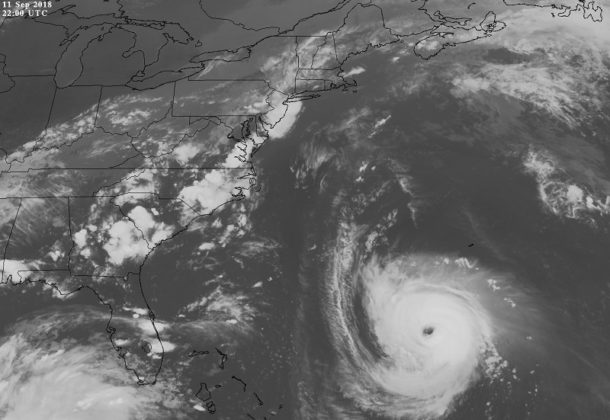It’s Hurricane Season. Plan & Prepare

During hurricane season June to November, Southern Maryland residents should take measures to plan and prepare to keep their family safe in an emergency, urges the Southern Maryland Electric Cooperative.
While hurricanes in Maryland are unusual, the state sometimes sustains damage — and some fatalities — from these powerful storms. Agnes in 1972, Floyd in 1999, Isabel in 2003, Ernesto in 2006, and Irene in 2011 are some of the storms that have caused significant damage in Maryland in recent history.
Tropical storms frequently cause flooding, coastal storm surge, and wind damage and often spawn tornadoes and thunderstorms. Widespread power outages may result. Residents are urged to learn their vulnerabilities and take action to reduce the effects of a hurricane disaster.
You should be able to answer the following questions before a hurricane threatens:
- What are the hurricane hazards most likely in your area?
- What does it mean to you?
- What actions should you take to be prepared?
For a list of steps to take before a storm arrives, visit SMECO’s Outages page or watch a video on outage preparation tips.
Locate a safe room or the safest areas in your home for each hurricane hazard. In certain circumstances the safest areas may not be your home but within your community. Listen to local announcements about evacuations in the event of an emergency and heed the warnings of local officials.
For additional information on hurricane preparedness, visit the National Hurricane Center.
When a storm forms in the tropics — and even before that stage — forecasters at the Miami-based National Hurricane Center are in continuous monitoring mode, employing a dense network of satellites, land- and ocean-based sensors and aircraft reconnaissance missions operated by NOAA and its partners.
Tropical systems acquire a name — beginning in 2016 with Alex — upon reaching tropical storm strength with sustained winds of at least 39 mph. Tropical storms become hurricanes when winds reach 74 mph and become major hurricanes when winds reach 111 mph.
Much of the information above was provided by St. Mary’s County Government – Emergency Management.
- Emergency Preparedness (tips from St. Mary’s County Health Department)
- Emergency Preparedness Guide (tips from Charles County government)
Southern Maryland Electric Cooperative is a customer-owned electric cooperative providing electricity to more than 150,000 services in southern Prince George’s County, Charles County, St. Mary’s County, and Calvert County.
To learn more about SMECO, visit its Leader member page. Visit SMECO on its Facebook page and Twitter.























